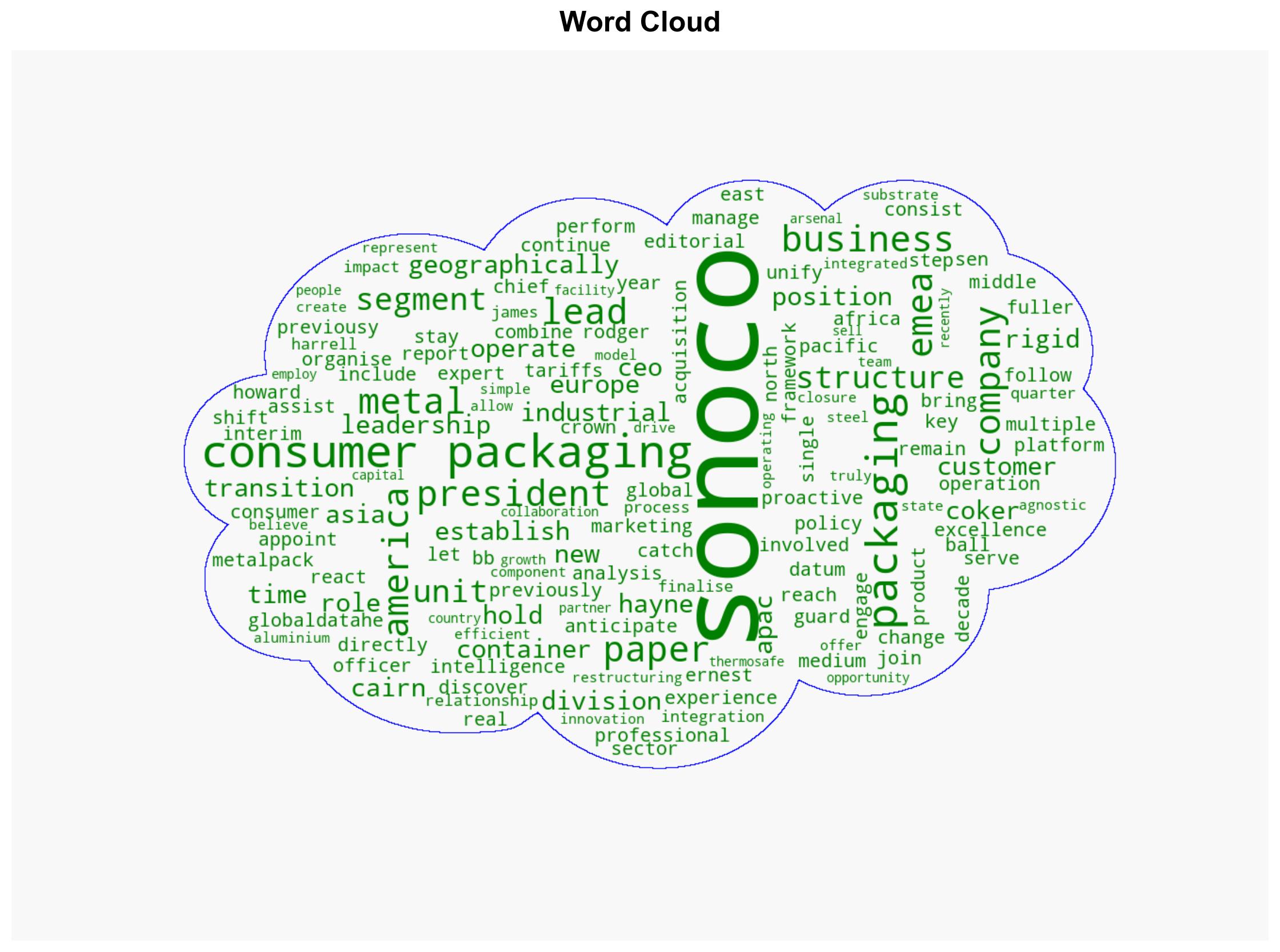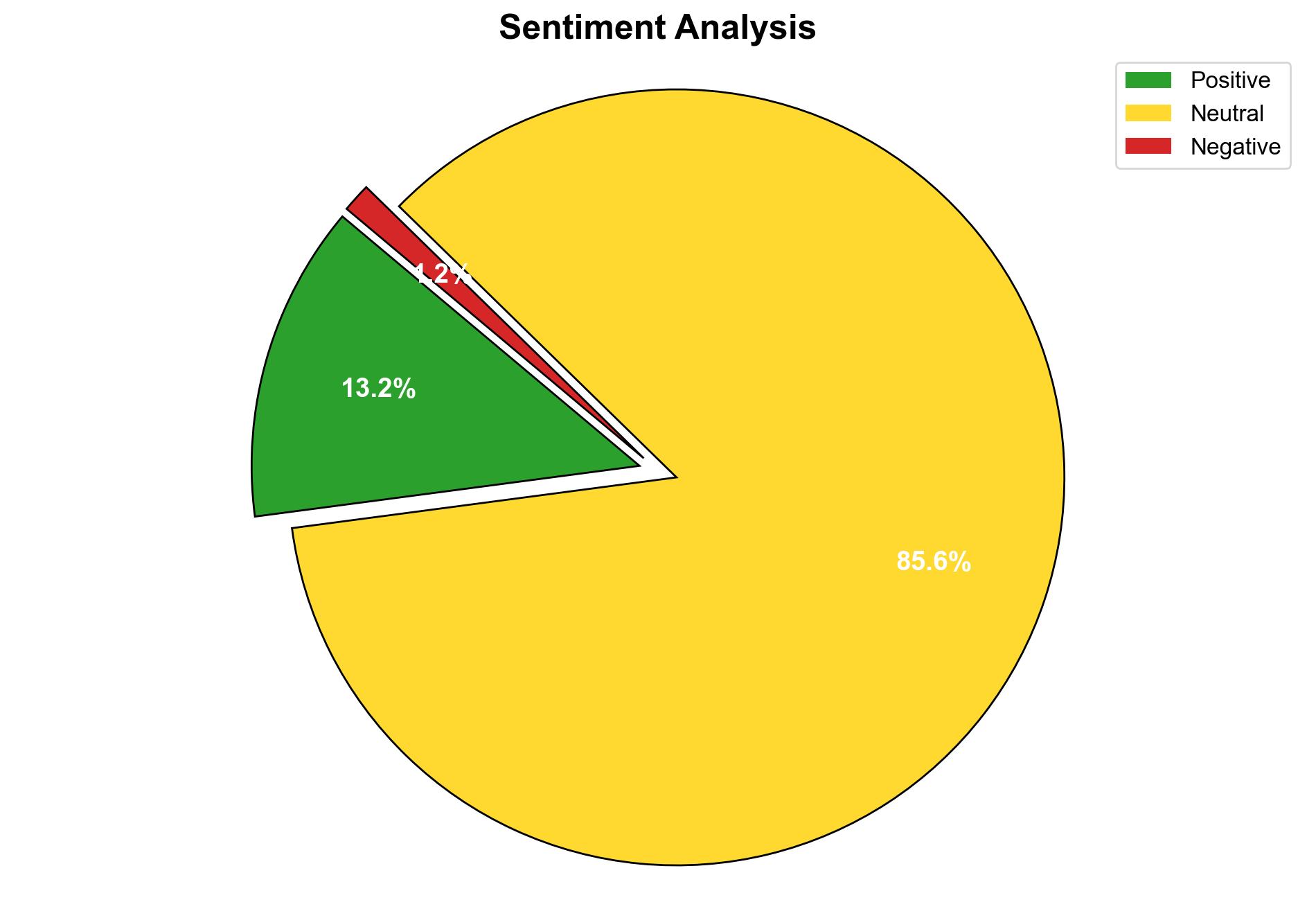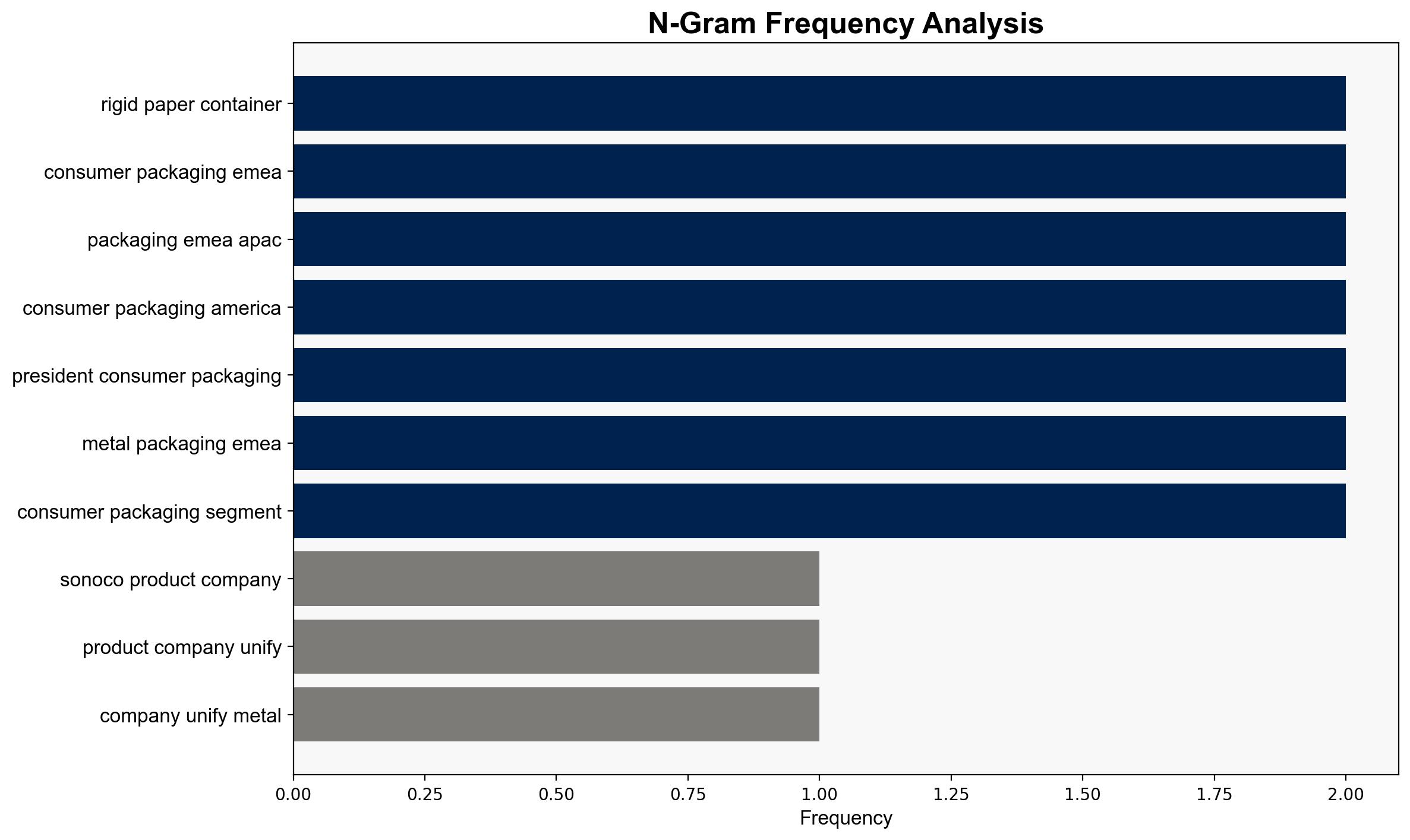Sonoco consolidates consumer packaging operations geographically – Packaging-gateway.com
Published on: 2025-11-11
AI-powered OSINT brief from verified open sources. Automated NLP signal extraction with human verification. See our Methodology and Why WorldWideWatchers.
Intelligence Report: Sonoco consolidates consumer packaging operations geographically – Packaging-gateway.com
1. BLUF (Bottom Line Up Front)
Sonoco’s strategic consolidation of its consumer packaging operations into geographically focused divisions aims to enhance operational efficiency and foster innovation. The most supported hypothesis is that this restructuring is primarily driven by the need to streamline operations and respond proactively to market dynamics, such as tariffs and regional demand variations. Confidence Level: Moderate. Recommended action includes monitoring the integration process for potential disruptions and leveraging the new structure to exploit regional market opportunities.
2. Competing Hypotheses
Hypothesis 1: Sonoco’s geographic consolidation is primarily a strategic move to enhance operational efficiency and innovation by aligning resources with regional market demands.
Hypothesis 2: The consolidation is a reactive measure to external pressures such as tariffs, regulatory changes, and competitive threats, aimed at maintaining market position and profitability.
Hypothesis 1 is more likely due to the proactive language used by Sonoco’s leadership, emphasizing innovation and growth opportunities, rather than merely reacting to external pressures.
3. Key Assumptions and Red Flags
Assumptions: The restructuring will lead to improved operational efficiency and market responsiveness. Regional leadership has the necessary expertise to drive innovation.
Red Flags: Potential for internal resistance to change, misalignment of regional strategies, and disruption during the transition phase.
Deception Indicators: Overemphasis on positive outcomes without addressing potential challenges or risks.
4. Implications and Strategic Risks
The restructuring could lead to short-term disruptions in operations and customer relationships. There’s a risk of misalignment between regional strategies and global objectives, potentially leading to inefficiencies. Economically, failure to adapt to regional market conditions could result in loss of market share. Politically, changes in tariffs or regulations could further impact operations. Cyber risks may increase during the transition as systems are integrated.
5. Recommendations and Outlook
- Monitor the integration process closely to identify and address any operational disruptions promptly.
- Enhance communication channels between regional divisions to ensure alignment with global strategies.
- Invest in regional market intelligence to better anticipate and respond to local demands and regulatory changes.
- Best-case scenario: The restructuring leads to significant operational efficiencies and increased market share.
- Worst-case scenario: Disruptions during the transition result in loss of key customers and reduced profitability.
- Most-likely scenario: Moderate improvements in efficiency and market responsiveness, with some initial operational challenges.
6. Key Individuals and Entities
Sen Cairns, Ernest Hayne, Howard Coker, Rodger Fuller, James Harrell.
7. Thematic Tags
Regional Focus: EMEA, APAC, Americas
Structured Analytic Techniques Applied
- Causal Layered Analysis (CLA): Analyze events across surface happenings, systems, worldviews, and myths.
- Cross-Impact Simulation: Model ripple effects across neighboring states, conflicts, or economic dependencies.
- Scenario Generation: Explore divergent futures under varying assumptions to identify plausible paths.
Explore more:
Regional Focus Briefs ·
Daily Summary ·
Methodology





